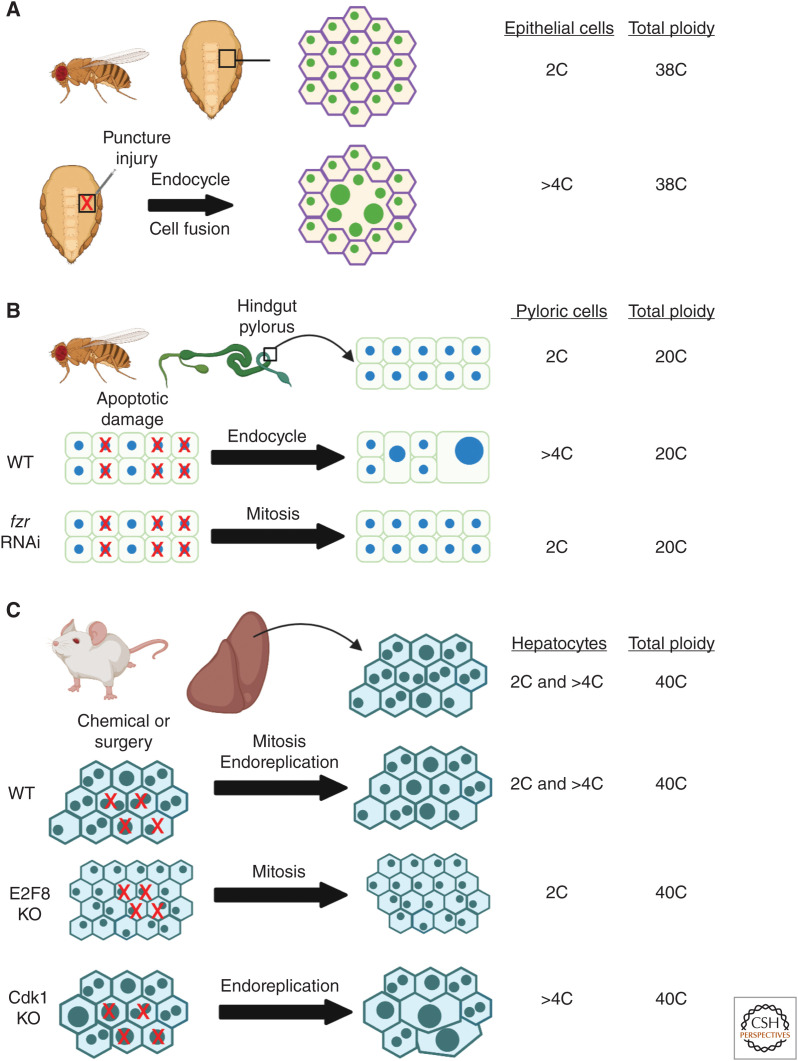Figure 2.
Polyploid cell growth restores tissue mass and maintains organ size in fruit fly tissues and in mouse liver. Examples of tissues in the fruit fly and mouse where polyploidy has been demonstrated to precisely restore tissue mass. (A) Epithelial cells underlying the abdomen cuticle in the adult fruit fly heal a needle puncture wound by the endocycle and cell fusion. The endocycle boosts epithelial ploidy to >4C and cell fusion speed wound closure (Losick et al. 2013). (B) The hindgut pylorus region of the fruit fly intestine is made of diploid cells that endocycle to repair genetically induced apoptotic cell damage (Cohen et al. 2018). Pyloric cells can be switched to a mitotic cell cycle by knocking down frz to restore organ size. (C) Mammalian liver regeneration relies on a combination of diploid and polyploid division as well as endoreplication of its hepatocytes (Wilkinson et al. 2018; Zhang et al. 2018; Lin et al. 2020). The mouse liver is able to regrow and restore organ size by solely relying on diploid hepatocyte division or polyploid cell growth, as observed in Cdk1 and E2F8 mouse mutants (Diril et al. 2012; Pandit et al. 2012). Total tissue ploidy equals number of cells times each cell's ploidy. (This figure was created with BioRender.com.)

